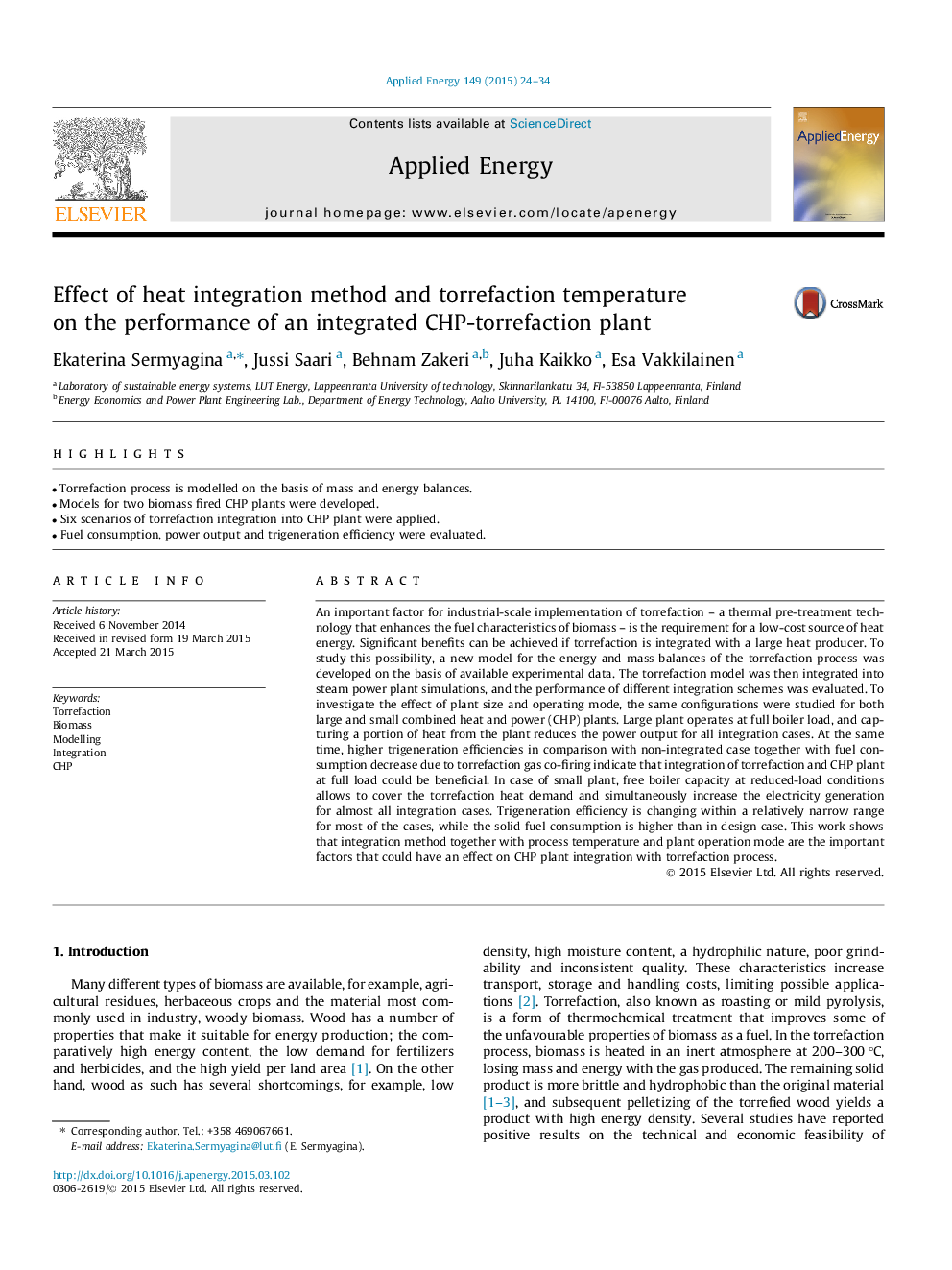| Article ID | Journal | Published Year | Pages | File Type |
|---|---|---|---|---|
| 6687098 | Applied Energy | 2015 | 11 Pages |
Abstract
An important factor for industrial-scale implementation of torrefaction - a thermal pre-treatment technology that enhances the fuel characteristics of biomass - is the requirement for a low-cost source of heat energy. Significant benefits can be achieved if torrefaction is integrated with a large heat producer. To study this possibility, a new model for the energy and mass balances of the torrefaction process was developed on the basis of available experimental data. The torrefaction model was then integrated into steam power plant simulations, and the performance of different integration schemes was evaluated. To investigate the effect of plant size and operating mode, the same configurations were studied for both large and small combined heat and power (CHP) plants. Large plant operates at full boiler load, and capturing a portion of heat from the plant reduces the power output for all integration cases. At the same time, higher trigeneration efficiencies in comparison with non-integrated case together with fuel consumption decrease due to torrefaction gas co-firing indicate that integration of torrefaction and CHP plant at full load could be beneficial. In case of small plant, free boiler capacity at reduced-load conditions allows to cover the torrefaction heat demand and simultaneously increase the electricity generation for almost all integration cases. Trigeneration efficiency is changing within a relatively narrow range for most of the cases, while the solid fuel consumption is higher than in design case. This work shows that integration method together with process temperature and plant operation mode are the important factors that could have an effect on CHP plant integration with torrefaction process.
Related Topics
Physical Sciences and Engineering
Energy
Energy Engineering and Power Technology
Authors
Ekaterina Sermyagina, Jussi Saari, Behnam Zakeri, Juha Kaikko, Esa Vakkilainen,
